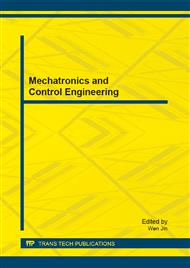p.329
p.333
p.341
p.349
p.355
p.361
p.366
p.372
p.378
Temporal Transient Localization for Enhanced Pre-Echo Suppression
Abstract:
A specially designed short window of reduced effective size and other supporting windows, as used in a switched MDCT audio codec, are sequenced in such a way that this special window is placed around transient samples, thereby providing transient localization while leaving frequency resolution unchanged. Pre-echo is better suppressed because transient localization reduces thespread of both quantization noise and high bitrates associated with transients.The overheads include one or two additiona lbits and a short procedure, both for windows equencing, and more memory for storing additional window functions.
Info:
Periodical:
Pages:
355-360
Citation:
Online since:
July 2013
Authors:
Keywords:
Price:
Сopyright:
© 2013 Trans Tech Publications Ltd. All Rights Reserved
Share:
Citation:


